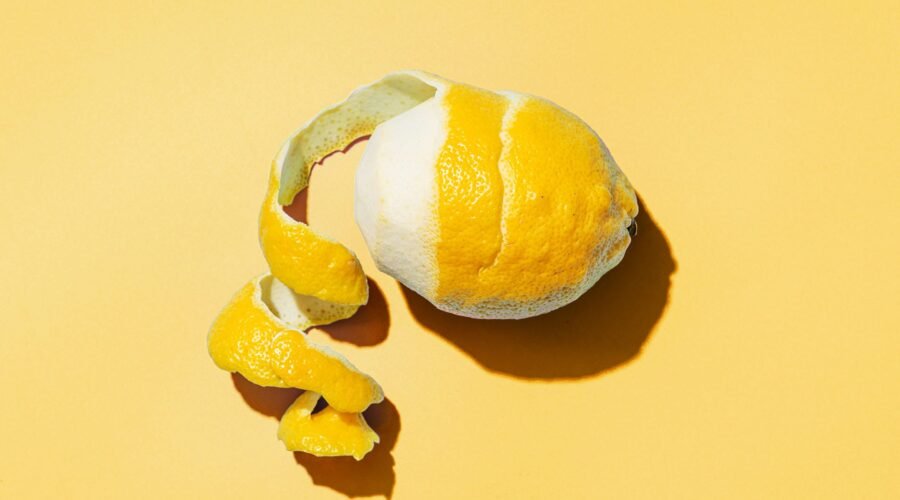Basics: How to Make a Lemon Twist Cocktail Garnish
There’s probably no more common cocktail directive than “with a twist.” While it seems fairly obvious that whatever drink has been ordered will appear with some form of citrus peel, how it’s actually going to impact the cocktail is often not so clear-cut.
Will the drink contain citrus juice, zest, oils or just something decorative in the glass that won’t affect the balance of the cocktail itself? Depending on the bar, “with a twist” might get you a wedge, a wheel, a strip, a spiral or maybe even a dehydrated disk that’s as beautiful—and about as edible—as a stained-glass window. And, if it is, in fact, imparting flavor, is this garnish actually helping the cocktail or could it be hurting the end result? Let’s dig in.
You May Also Like: A Bartender’s Secret Formula to Create Countless Cocktails at Home
To Twist or Not to Twist?
“Twists are great for classic martinis, which benefit from the oils. [They] subtly flavor the rim,” says Gustavo Zamora, bar manager at Oceans and Carlotto in New York City. “But sometimes they can harm the drink; if they get inside the glass and stay there too long, they add another profile note that isn’t needed.”
It’s true: The bitterness of pith, the cottony white layer between the peel and flesh of citrus fruit, can throw a cocktail off balance. But as long as the twist (also called a citrus curl or citrus spiral) sits on the edge of the glass, the oils can be expressed without the pith macerating in the glass.
“Garnishes can add color, taste and texture when used properly, but personally, I’m careful when garnishing each cocktail,” says Zamora. For example, he opts for a twist rather than a wedge in a “skinny” margarita, “because it already has a tart profile.” In contrast, he goes for a lime slice or wedge for a classic margarita “since they’re a bit more on the sweeter side and it adds freshness.” In a Negroni, an orange peel balances the booze-forward cocktail, he continues, while the oils brighten and enhance the notes of the Campari. For an Old Fashioned, “I do ‘bunny ears’—orange and lemon twists—since it’s a booze-forward cocktail that welcomes a subtle citrus note without overwhelming it.” As for sodas and tonics? He garnishes with lime and lemon wedges, “to add both flair and flavor.”
How to Make a Twist
Fortunately for the at-home mixologist, a proper lemon twist and other citrus garnishes are easy to produce and aren’t much harder than peeling a carrot.
“Make twists or slices when you don’t want to add more juice to an already balanced drink, like a classic daiquiri,” says Ángel Bautista, head bartender at Houston’s Andiron. “I enjoy using a potato [vegetable] peeler, as it offers great dexterity and helps me to make a lot of quick cuts more safely than I can just using a knife.”
That said, Bautista also knows the value of a good four-inch paring knife. “It’s sometimes an overlooked tool because of its size, but it’s one of my favorites because I can make small, precise cuts for smaller details on garnishes, and I can also clean up any harsh cuts made from the potato peeler.”
And this is where specialty bar tools can come in handy. “I definitely recommend a channel knife, especially for a home bar, as it’s easy to control and makes consistent clean cuts,” explains Bautista. “I would also recommend pinking shears, which are a super easy way to make a decorative edge on small cuts of citrus peel.”
3 Ways To Make a Lemon Twist
1. Channel Knife
This is an inexpensive product that essentially exists to make citrus twists. It makes thin strips with just enough pith to hold their shape and not break when you try to extract their oils. Make strips as long or short as you want—four inches is usually best. Then use a paring knife to clean up any excess pith or rough edges, if necessary. Twist strips into a spiral with your hands or wrap them around a chopstick or straw. Hold it tightly for at least a few seconds, which will help it hold its shape.

2. Vegetable Peeler
This tool is good for thicker and more rustic twists, where expressing the oils over the drink is a priority. Carefully, and with steady pressure, peel thick strips from the lemon; usually going end-to-end works better than around the middle, because there’s less risk of the strip breaking as you peel. Use a paring knife to straighten the edges, if desired, and twist into a spiral with your hands or around a chopstick or straw.

3. Paring Knife
Using a paring knife is a fool-proof method good for when you want to make several twists in advance. The only downside is that the lemons become less juiceable than in the previous two methods, which leave the fruit whole. Cut thin (about 1/4 inch) slices from the middle of the lemon (each lemon’s twist yield will vary with its size). Lay the slices flat and make a cut from the center of each slice to the edge (just as you would if placing the slice on the edge of a glass). Then use the tip of the knife to separate the peel from the lemon flesh, striking a balance between not including too much pith, but not cutting so close to the edge that you risk cutting through the peel. As with the other methods, use the paring knife to clean up any excess pith or rough edges, if necessary, and twist into a spiral with your hands or around a chopstick or straw.
Published: November 28, 2023


